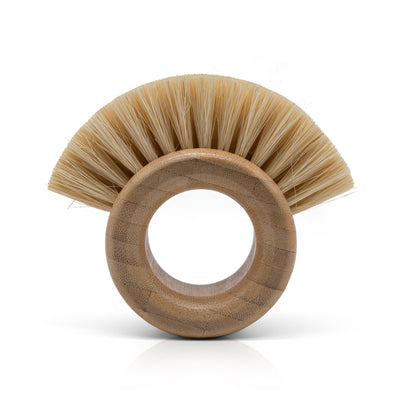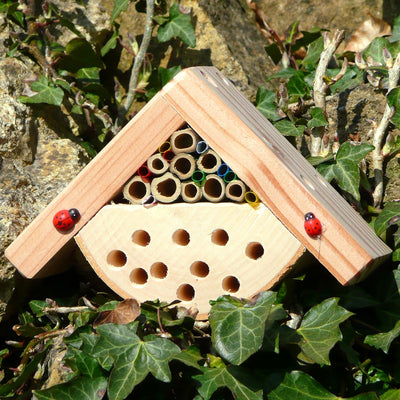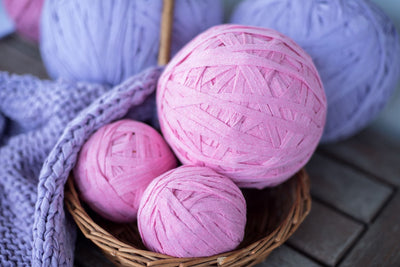As summer approaches, we wanted to give you an update on everything Buy Land Plant Trees. Throughout the winter and spring, we’ve been busy planning, planting and mulching our 13-acre field – it really has been all systems go!
Many of you might remember us talking about our 13-acre field a wee while ago but for those of you that don’t know, the planting out of our 13-acre field has been a long time coming! Back in August, we worked with Cumbria Woodlands to apply for a grant from the United Utilities Tree Fund, proposing to plant 25,000 trees using the Miyawaki Method.
‘The Miyawaki Method?’, you may be wondering. Let us explain. The Miyawaki Method is a tree planting method that helps to create forest area quickly, accelerating the natural growth process. This is done by planting mixed species trees in dense clusters, replicating the regeneration process that occurs in natural forests. By using a mix of species with varied canopy levels and close planting, the trees support each other by providing shelter and protection from predators. The root and mycorrhiza networks share nutrients, and the trees compete and collaborate in the vertical space; all factors contributing to a faster rate of growth. Quite cool, right?! If you are interested, you can read a bit more about it here.
Anyhow, we got the green light for the grant in November, giving us enough money to buy 20,000 trees. The other 5,000 has come from you lovely lot – 20% of the profit from your purchases along with our Buy Land Plant Trees vouchers have bought them! Your money has also helped to fund 25,000 of our jute mulch mats – one for every tree to help suppress surrounding vegetation and give them an extra bit of protection to help them get off to a strong start. Since we got the go-ahead, we have been working really hard to plan the logistics of getting the trees to the field, planting them and organising 25,000 of our jute mulch mats to be taken to the field too. Safe to say it has been rather busy!
By the middle of February, we were ready to go – the trees were ordered from a local tree farm, we’d worked out how to get them and our jute mulch mats to a rather remote field with just a muddy, rather waterlogged track for access. Our professional tree planters from NW Forestry were also raring to get started!
We spent five weekends planting and mulching, in all sorts of weather. You name it, we had glorious sunshine, heavy rain, gale-force winds and even snow at some points! But it was all worth it. The NW Forestry tree planters were such an invaluable part of the project as they were able to plant trees extremely speedily (MUCH quicker than us) and a group of volunteers, including family, friends and staff from Chimney Sheep followed behind, fitting mulch mats onto every single tree. It was pretty back-breaking work but to be able to be in the fresh air and listening to the noise of the wildlife around us was really special. Eventually, we got it all finished and we were all rather chuffed with what we had achieved!
Throughout the project we’ve had so much support, from our customers with all their purchases, Cumbria Woodlands, United Utilities, NW Forestry, all our brilliant mulching volunteers, the Chimney Sheep staff, the local farmers and the local community. It really has been a team effort, so a HUGE thank you to everyone! Although what we are doing is on a small scale, it all helps to make a difference.
So, that’s where we are! Thank you again for all your support through all your purchases. We’ll of course keep you updated on the progress on how the trees get on as well as the progress we are making on our other two pieces of land so make sure you keep your eyes peeled for our next update!
FOLIAGE FOCUS
Aspen (Populus tremula)
FACTBOX:
- Aspen is also known as the ‘whispering tree’ because it trembles, flutters and shimmers even in the slightest of breezes, which ripples its leaves and makes a beautiful ‘whispering’ sound.
- These trees are native to cool regions in the northern hemisphere and in the UK are most common in the north-west of Scotland.
- Here in Cumbria, our local provenance Aspen’s have seen a huge decline over the last century. This is why we’ve planted plenty of Aspen Trees in our seven-acre field and in our 13-acre field.
- They grow in clonal colonies, particularly in ancient woods but they also love well-drained soil near rivers. Aspen’s flourish in open sunlight (they aren’t a lover of shade) and moist soil.
- Mature Aspen Trees grow to about 25m and are often covered with lichen which gives the trunk a black appearance.
- The leaves are round, large and irregular, with stalks that are flattened and flexible. This is why the leaves are able to flutter so easily and is what gives the tree its unique ‘whisper’.
- The colour of an Aspen’s leaves are BEAUTIFUL. Its young leaves are a coppery colour before becoming green, and then turning a vibrant yellow or occasionally red colour when they fall in autumn.
- Aspens are dioecious, meaning that their male and female flowers (catkins) – which appear in March and April – grow on different trees.
- In Celtic mythology, the visual effect of an Aspen trembling in the wind was said to be the tree communicating between this world and the next.
- You can read more about Aspen Trees here!




















